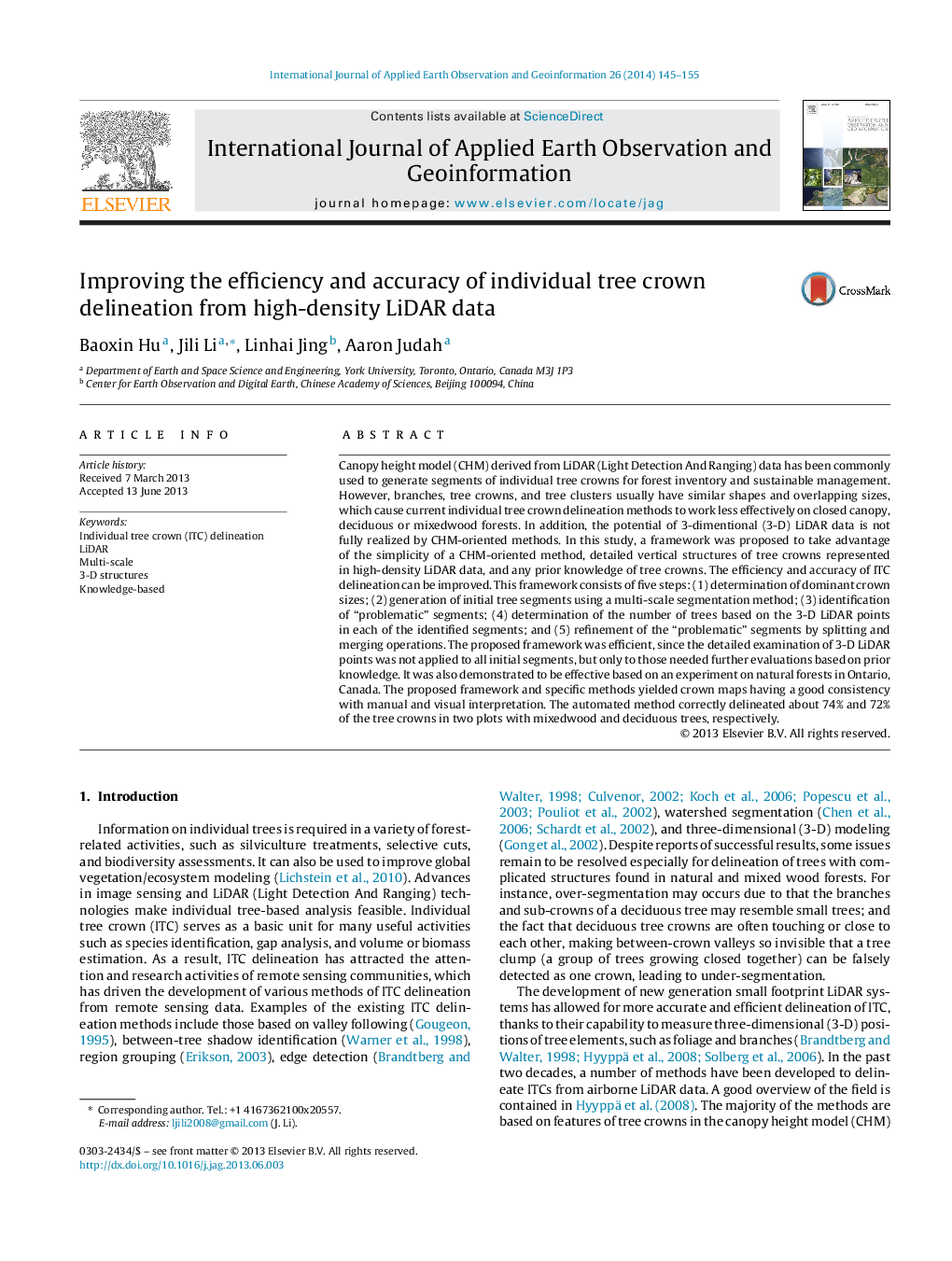| Article ID | Journal | Published Year | Pages | File Type |
|---|---|---|---|---|
| 6349107 | International Journal of Applied Earth Observation and Geoinformation | 2014 | 11 Pages |
Abstract
Canopy height model (CHM) derived from LiDAR (Light Detection And Ranging) data has been commonly used to generate segments of individual tree crowns for forest inventory and sustainable management. However, branches, tree crowns, and tree clusters usually have similar shapes and overlapping sizes, which cause current individual tree crown delineation methods to work less effectively on closed canopy, deciduous or mixedwood forests. In addition, the potential of 3-dimentional (3-D) LiDAR data is not fully realized by CHM-oriented methods. In this study, a framework was proposed to take advantage of the simplicity of a CHM-oriented method, detailed vertical structures of tree crowns represented in high-density LiDAR data, and any prior knowledge of tree crowns. The efficiency and accuracy of ITC delineation can be improved. This framework consists of five steps: (1) determination of dominant crown sizes; (2) generation of initial tree segments using a multi-scale segmentation method; (3) identification of “problematic” segments; (4) determination of the number of trees based on the 3-D LiDAR points in each of the identified segments; and (5) refinement of the “problematic” segments by splitting and merging operations. The proposed framework was efficient, since the detailed examination of 3-D LiDAR points was not applied to all initial segments, but only to those needed further evaluations based on prior knowledge. It was also demonstrated to be effective based on an experiment on natural forests in Ontario, Canada. The proposed framework and specific methods yielded crown maps having a good consistency with manual and visual interpretation. The automated method correctly delineated about 74% and 72% of the tree crowns in two plots with mixedwood and deciduous trees, respectively.
Related Topics
Physical Sciences and Engineering
Earth and Planetary Sciences
Computers in Earth Sciences
Authors
Baoxin Hu, Jili Li, Linhai Jing, Aaron Judah,
